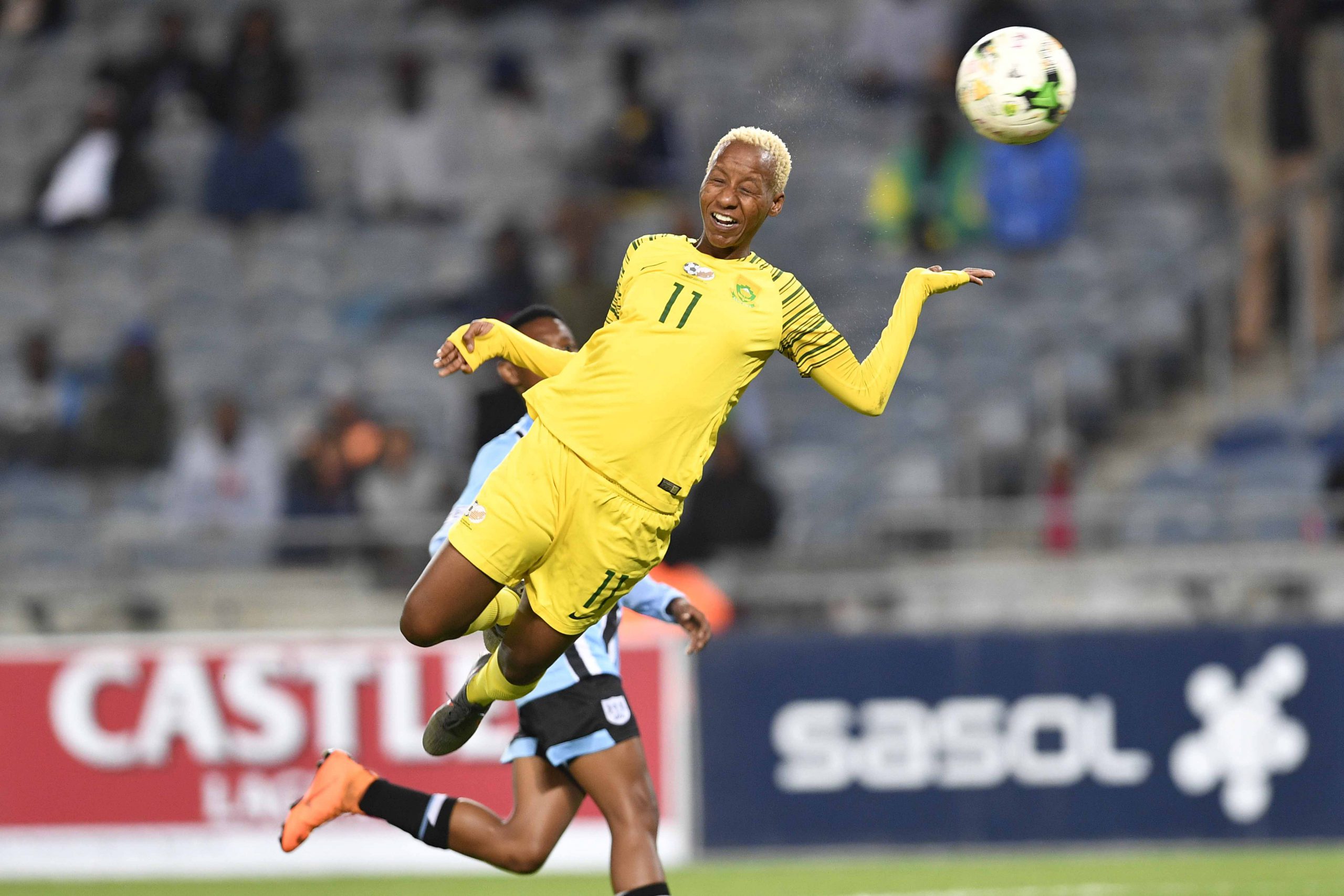SA women’s football remains a tale of two leagues
The Safa Women’s National League promises to strengthen women’s football in the country by pitting strength against strength. But what does that mean for the Sasol League National Championships?…
Author:
10 February 2020

The Sasol League National Championship is a celebration of the country’s best women’s football teams. The cream of the crop from all nine provinces battle it out to be the national champions after winning their provincial leagues.
Gauteng has dominated the competition since it was established a decade ago, walking away with the title seven times. JVW Girls Football Club are the latest to reign supreme after a thrilling final against Limpopo’s Ma-Indies in December last year.
In the past two seasons, the playoffs were used as a pathway to the Safa Women’s National League (SWNL). The SWNL was seen as the breakthrough that the sport needed in South Africa, promising to be the window to professionalising it with the best teams regularly playing competitive football against each other.
Last year’s finalists, JVW and Ma-Indies, have been added to the list and the league will increase to 14 teams for the next season. However, with the stronger teams being promoted to the SWNL, the annual playoffs will become less competitive.
Safa’s gain, Sasol’s loss
In last year’s competition, only the three teams that finished on the podium, including KwaZulu-Natal’s Sunflower Women’s Football Club, dazzled. The other six provinces lacked structure and still need to develop further to qualify for the national stage. The quality and organisation of the teams that will be left to compete for the longest-running club football competition in the country look likely to become substandard.
Witnessing a bronze medal match ending in a 16-0 scoreline is a setback in what women’s football has been able to achieve in the last few years. Such a high score shows the gulf in class between the two teams. This also means that more capable teams don’t get challenged by their opponents and, therefore, easily ascend to the podium.
Related article:
“There are still some teams that are still competitive even though Executive Ladies were quite generous with the goals. Maybe that means the Eastern Cape needs to reinforce women’s football. If you are going to miss the likes of [Mamelodi] Sundowns and UWC [University of the Western Cape] in the playoffs, it’s bound to go down. But hopefully this is the stepping stone for some of the teams like JVW to make their mark and play in the national league,” former Banyana Banyana captain, Amanda Dlamini, said.
Sponsors Sasol does not seem to be worried about the level of competition dropping. Group sponsorship manager, Nozipho Mbatha, is adamant that the Sasol League will remain a feeder for Banyana by exposing players from places that would otherwise not be seen.
“We have always positioned the Sasol League as a feeder to Banyana and in August the national league was launched which gave us an opportunity to relook the Sasol League in its totality and reposition its place in women’s football.
“Whether there is space for Sasol League, the answer is yes. We have opted to say that the league is a platform for any young footballer who wants to get into women’s football. It has become an entry point with the ultimate goal of playing for Banyana,” said Mbatha.
The arrival of an Olympian
The Sasol League, which boasts over 130 teams in all the nine provinces, is viewed as a development programme that can feed the three women’s national teams – the Under-17s, Under-20s and Banyana. Most of the teams are owned and coached by individuals who are passionate about the sport. They usually have to dig into their own pockets to supplement the R30 000 yearly grants from the sponsors.
“Once we stop thinking this is a development competition, I think it will get better,” said Dlamini.
While the playoffs look to be weakening, the SNWL will become more competitive. Gauteng has the most teams in the form of Tshwane University of Technology, University of Johannesburg, Mamelodi Sundowns Ladies and the newly added JVW. Teams that are well resourced like the universities and those affiliated with Premier Soccer Leagues teams will continue to thrive in the competition because the players and coaching staff have fewer worries about financial support, unlike the other teams.
Related article:
Last September, JVW made news when they signed multiple Olympic champion Caster Semenya, who will join the club in the 14-team competition. Her court battle with World Athletics, formerly the International Association of Athletics Federations (IAAF), forced her to fall back to her childhood sport, football, in order to keep fit while fighting her way back to the track.
Semenya built a remarkable career on the track for years, creating impressive relationships with corporate companies. Her new playing field can possibly invite new investors and create relationships with the league and teams. Playoff-winning coach, Ciara Picco, believes Semenya’s participation will boost football’s image not only in South Africa but on the continent too.
“At training she brings a sense of professionalism and she really ups the vibe of the other girls by way of being a true professional. A world class athlete. Having a really strong, powerful female figure into our sport is really important for building the image, attracting different types of media and fans,” explained Picco.
The future of women’s football
Even with some of the matches being televised and teams playing home and away, the SWNL is still an amateur league. Most of the players are schoolgoers or university students, so the South African Football Association (Safa) still has much to do to change the face of the sport.
Given that background, Safa withdrawing its bid for the 2023 Fifa Women’s World Cup was a sober decision. South Africa, North Korea, South Korea, Brazil, Colombia, Japan, Argentina and Australia had shown interest in hosting the tournament. The nostalgia of a successful 2010 Fifa World Cup is probably what planted the idea that South Africa is ready for another major tournament, but women’s football is not commercially viable at the moment.
Apart from women’s football still not being professionalised, the SWNL continues to experience some teething issues. These range from teams having to drive more than 1000km to play their fixtures to referees arriving late. Safa acting chief executive officer, Gay Mokoena, admits that the mother body still needs to clean house before being able to host a major tournament.
“We resolved that as an association we should not proceed with the bid for the Fifa Women’s World Cup 2023, because, among others, we have taken into account netball will be hosting a World Cup during that year but also the fact that we want to strengthen our women’s national league first before we invite the world to come and play,” explained Mokoena.
Related article:
But the most worrying issue with the SWNL is the lack of a title sponsor. As concerning is that months after the competition was launched, prize money is not yet known.
“We are working on potential sponsors, however for the current financial year the sponsorship funding might not come on time but we have made arrangements and plans for the funding for this year. Our potential sponsors want to use the league to speak to women at home so the question at the moment is, if we are structured the best way that we can reach the market,” added Mokoena.



